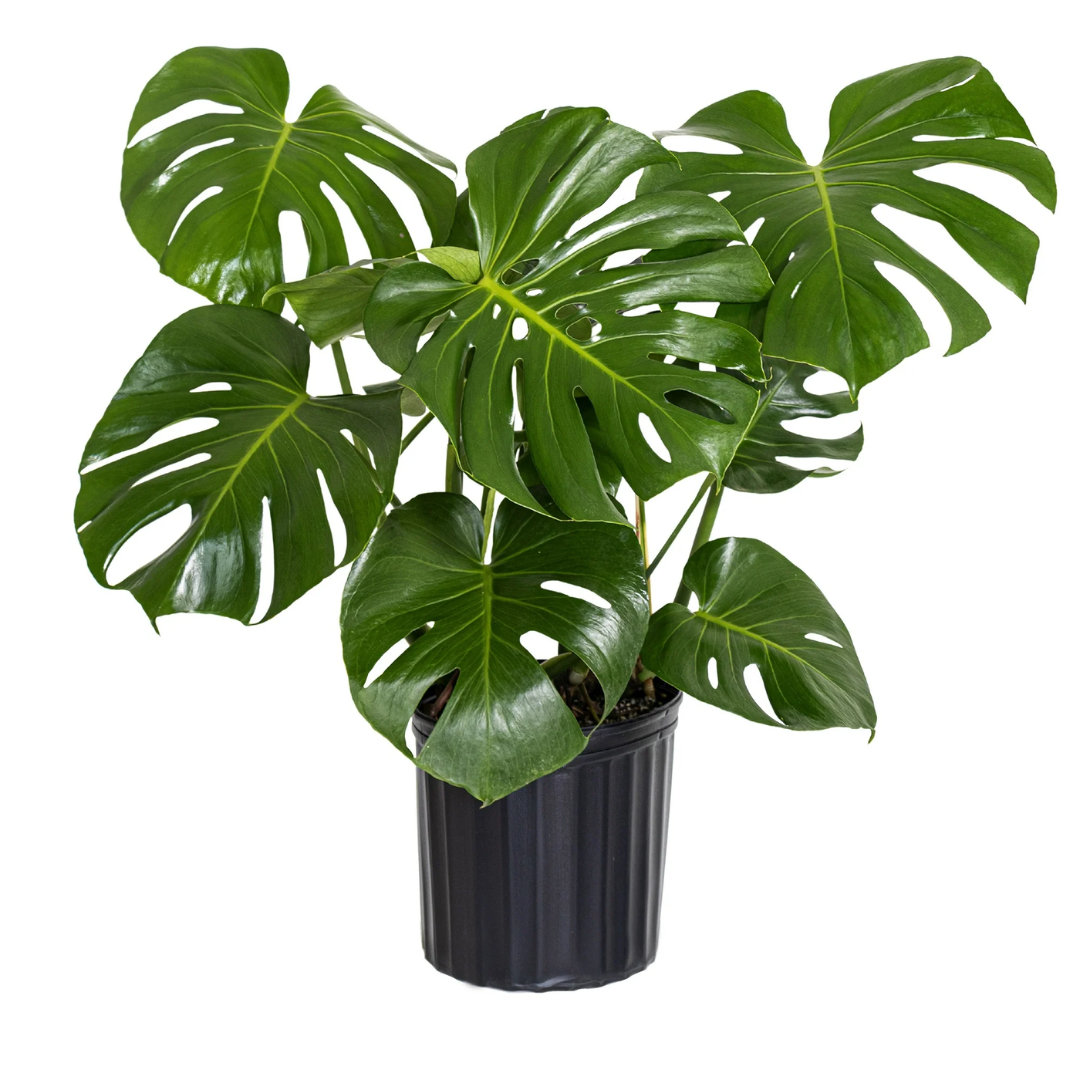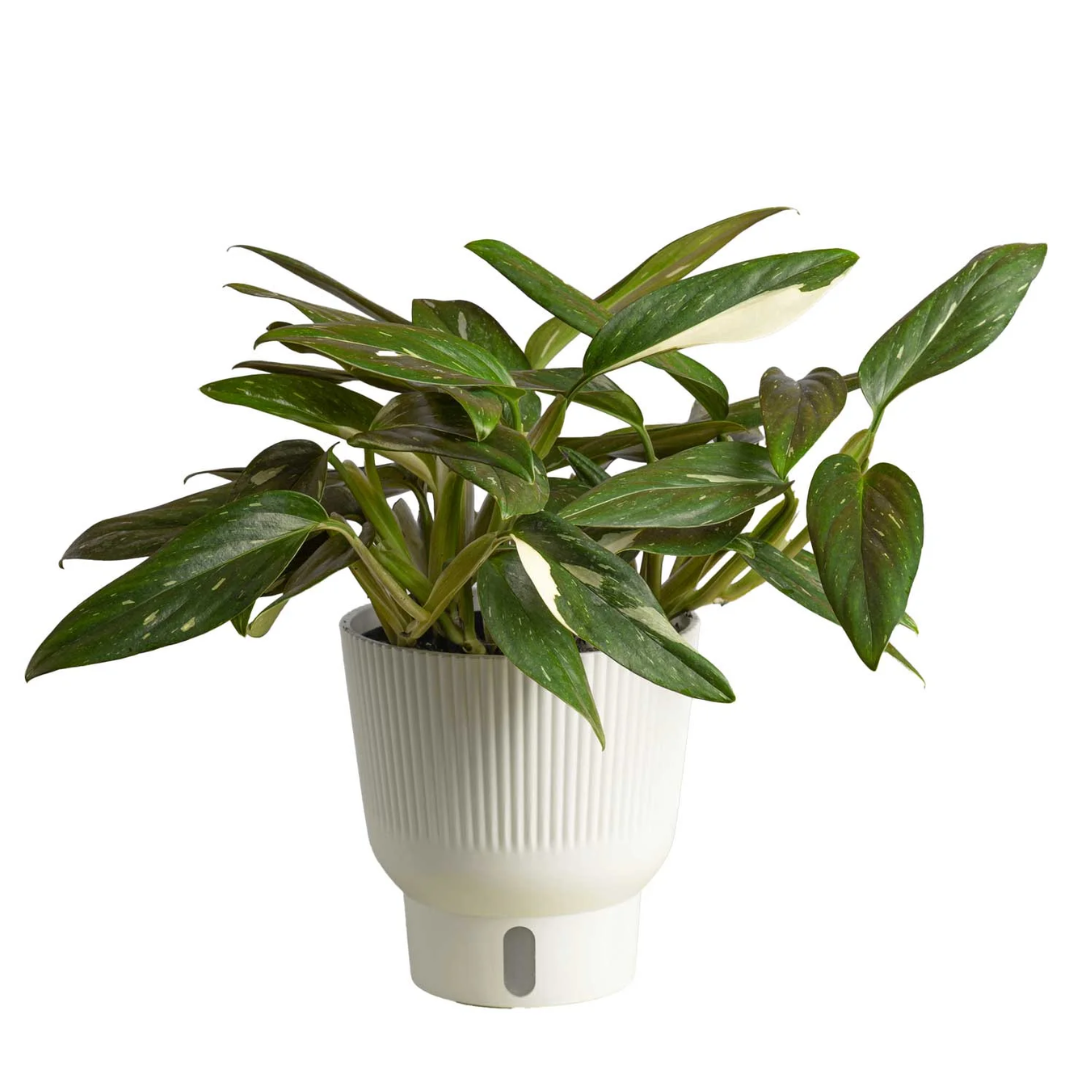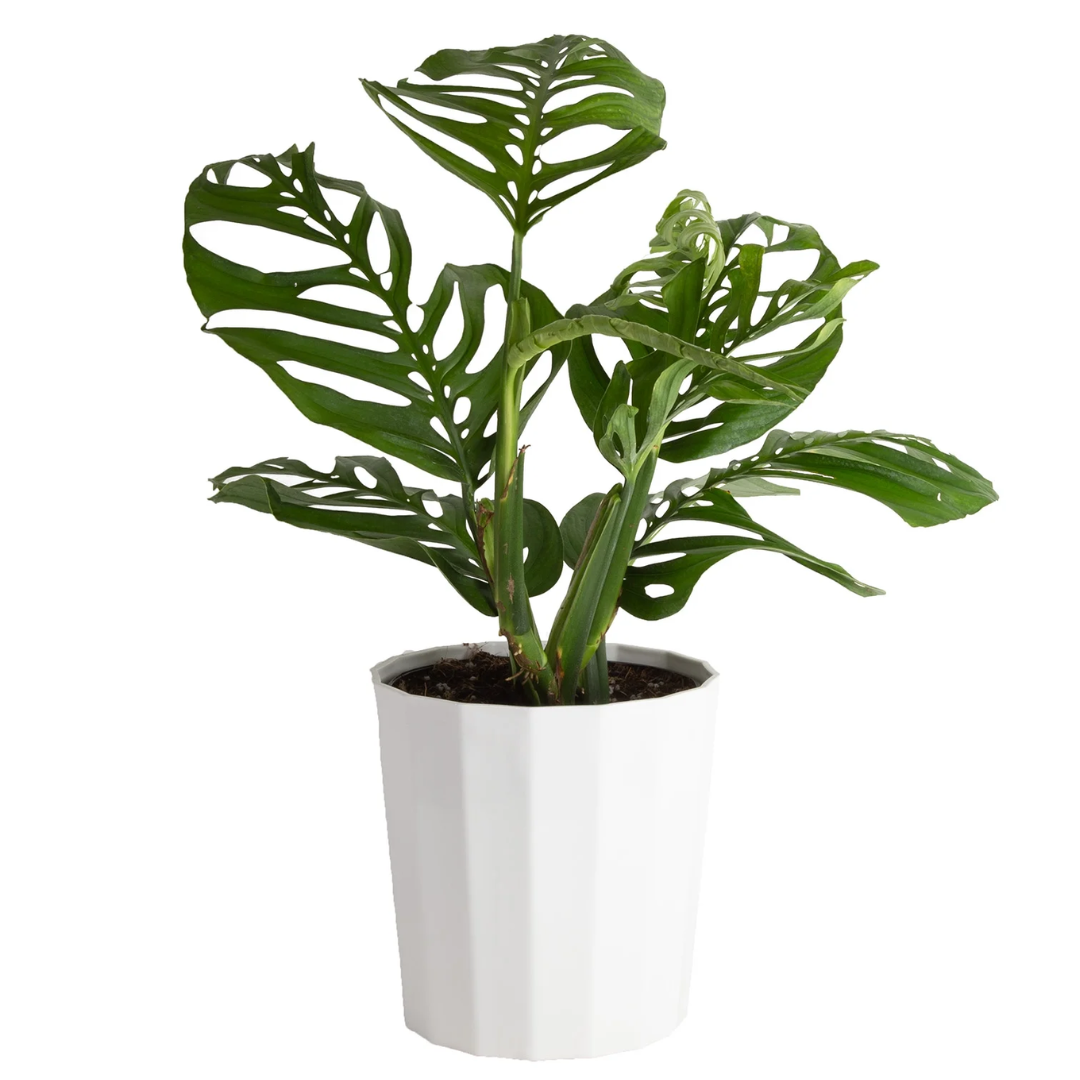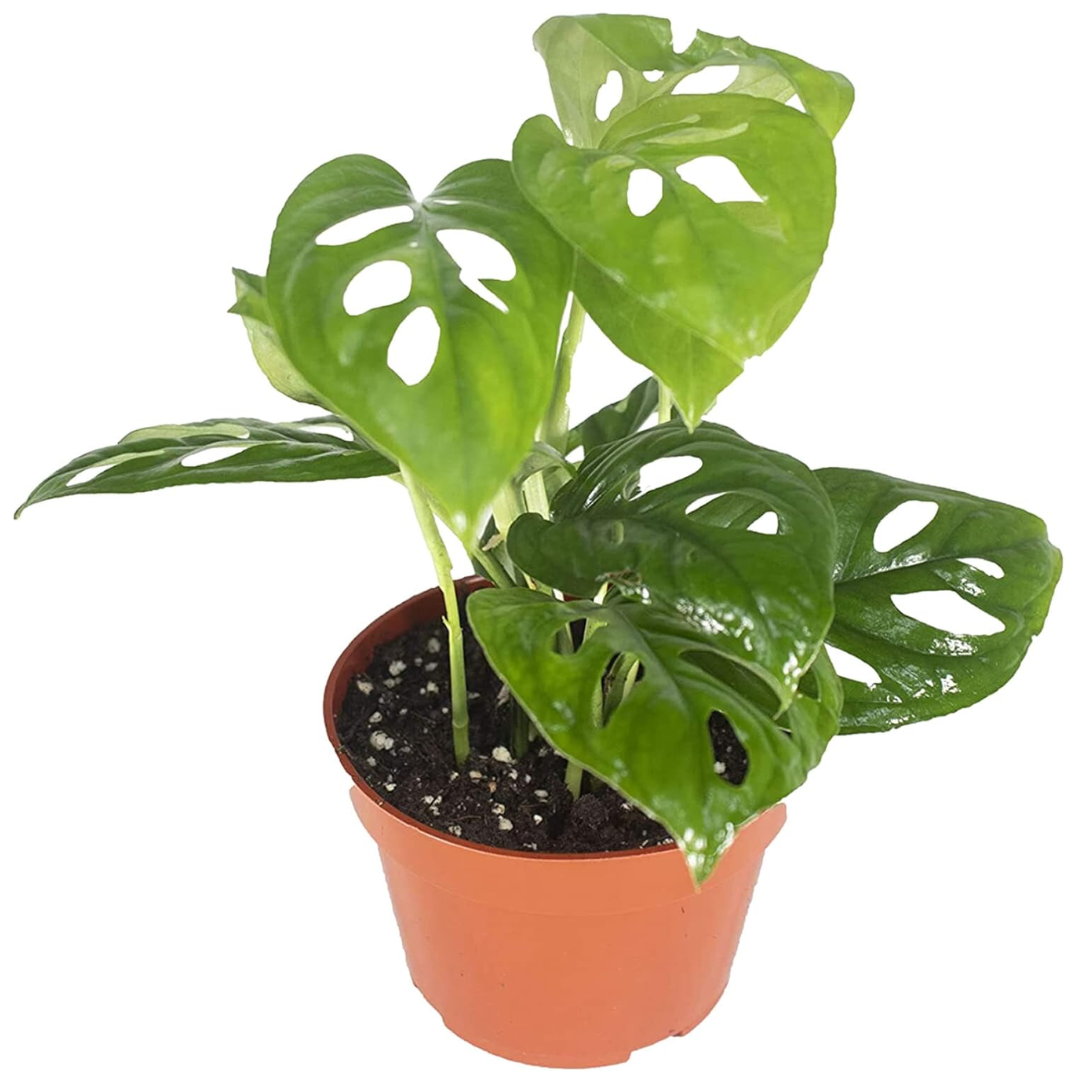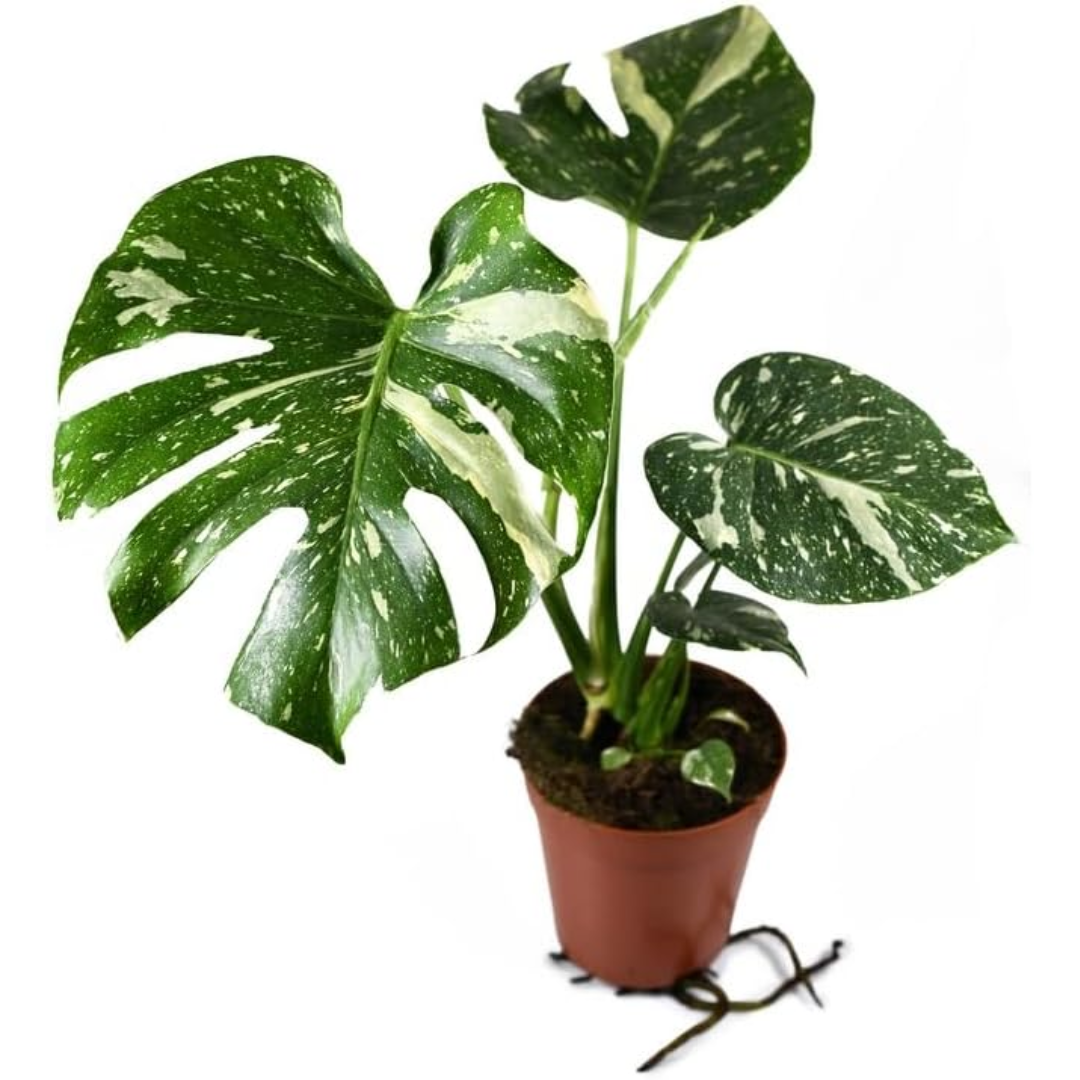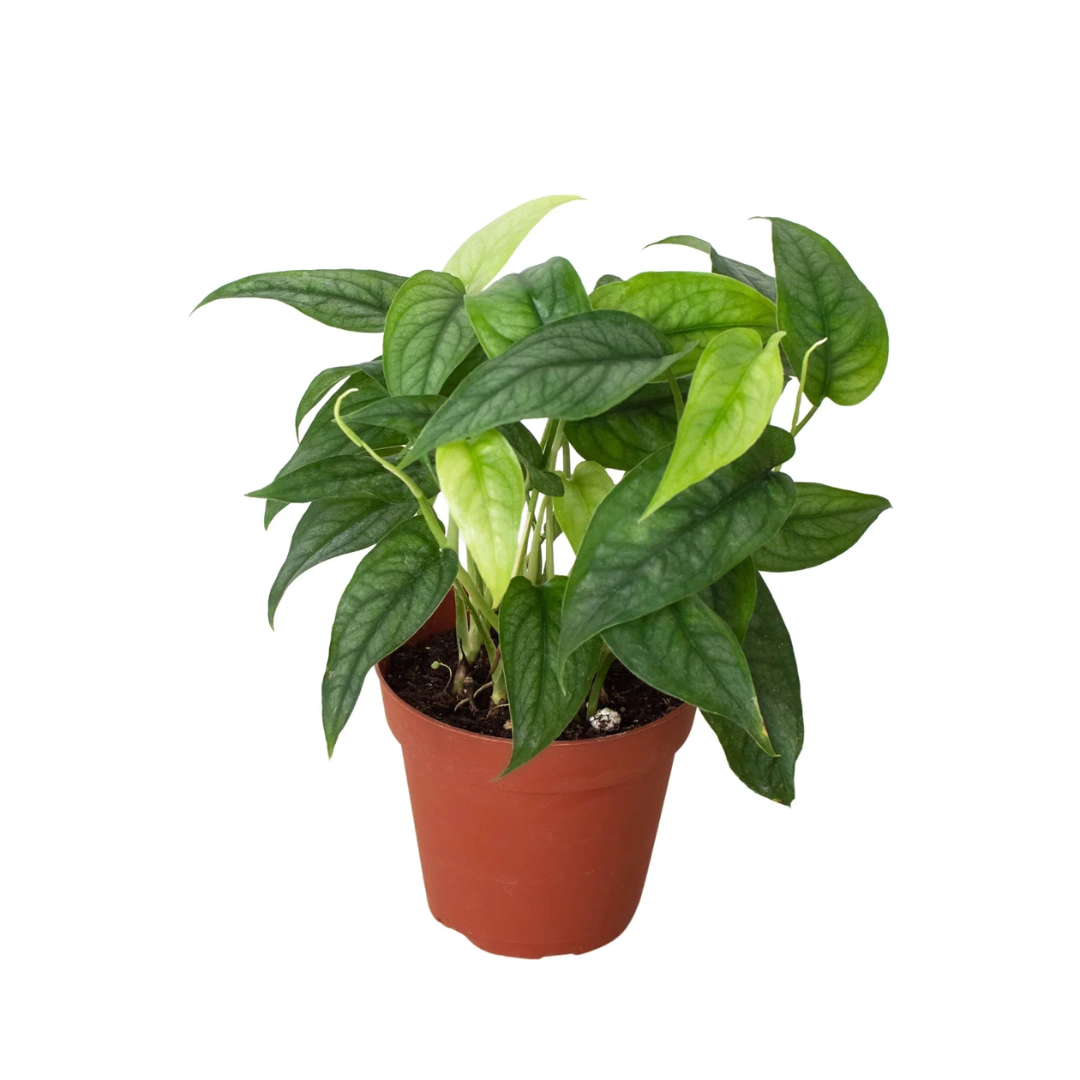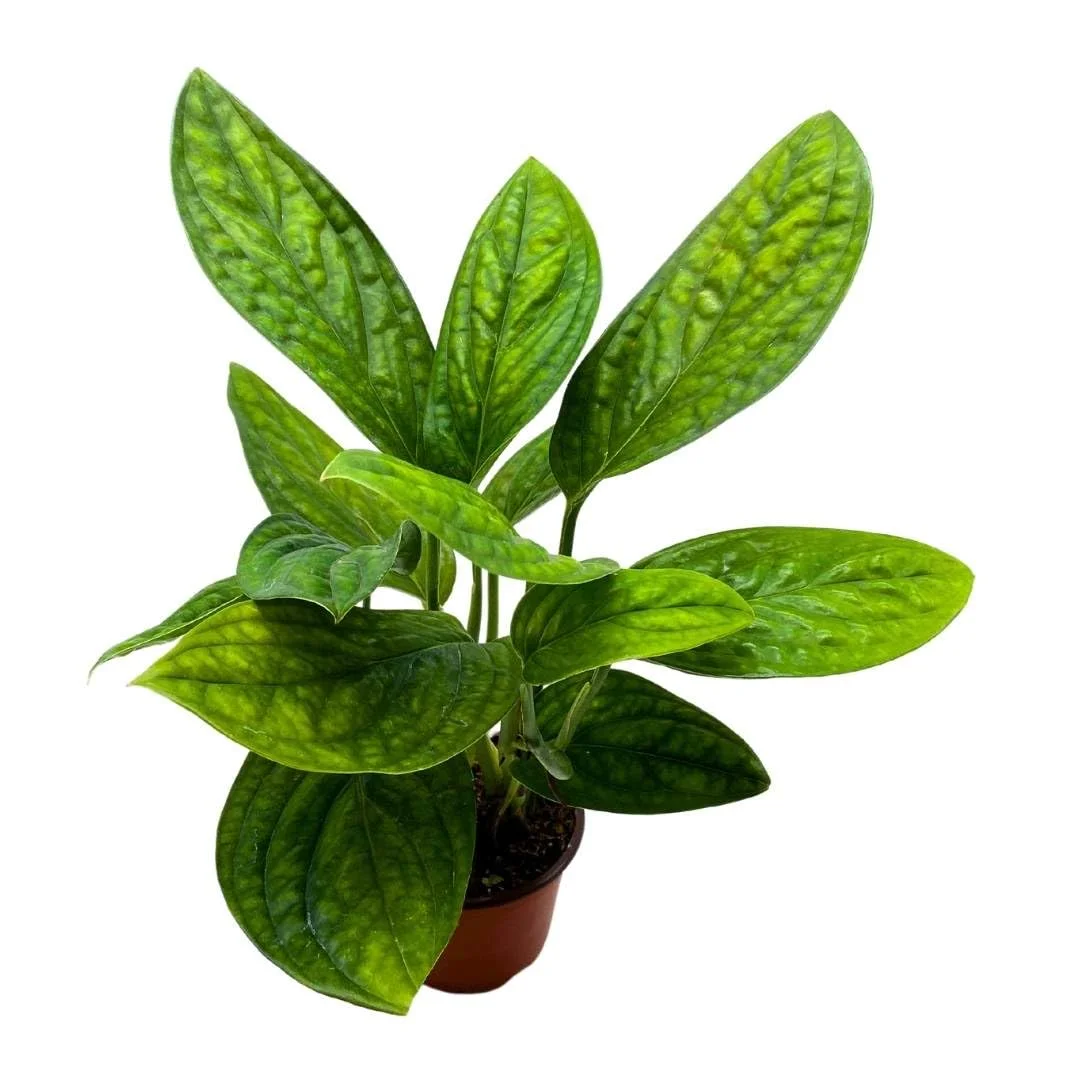Types of Monstera Plants — And How You Should Display Them in Your Home for Epic Foliage
Designers and plant experts share their secrets on how to bring these beauties to life in your space
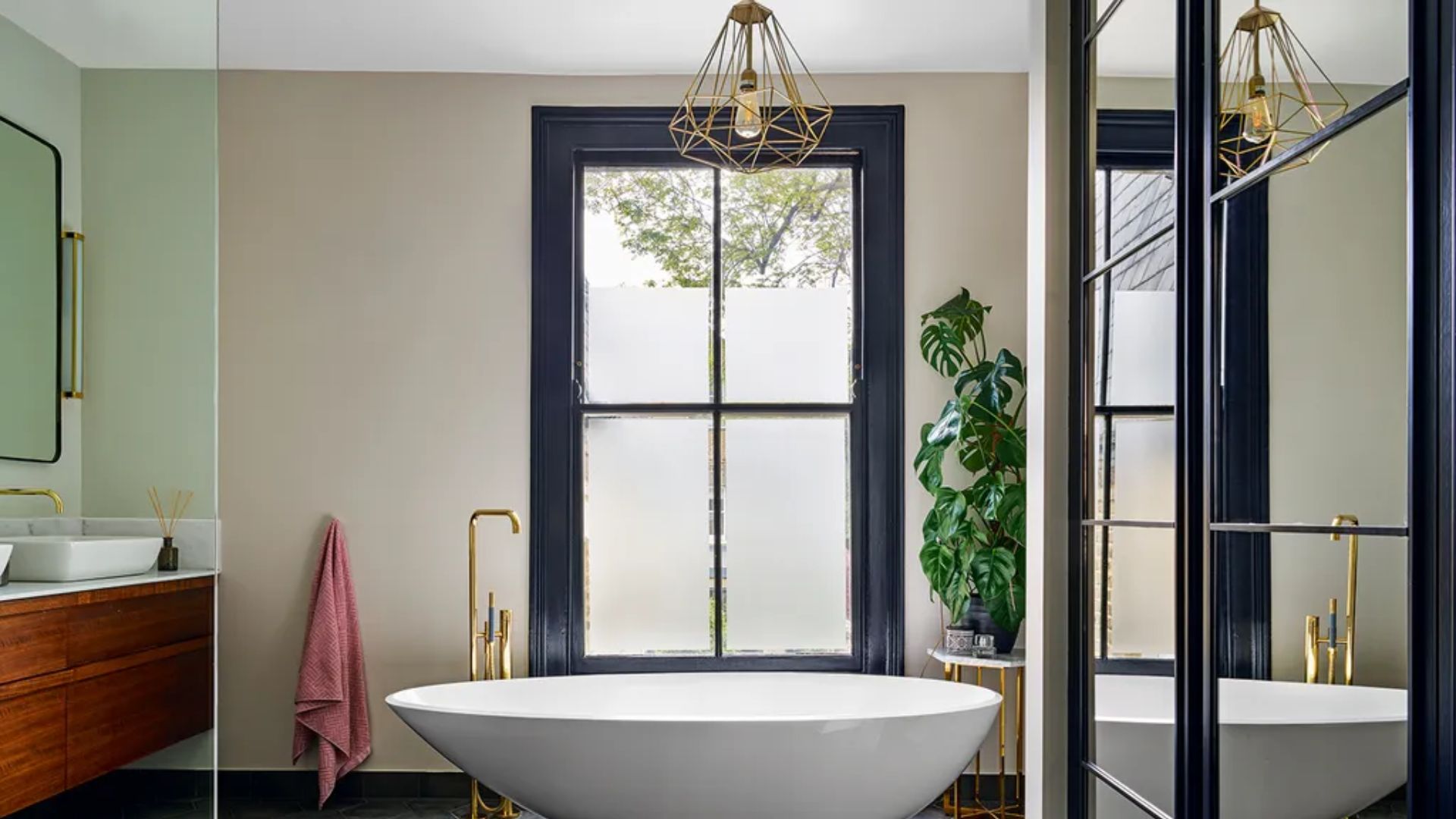
There must be few modern plant parents who don't own a Monstera. Also known, as the Swiss Cheese plant, this 1970s foliage favorite swept back into interior style several years ago and has remained there since.
As well as its huge, lush, fenestrated leaves, another part of its appeal is that Monstera plant care is so simple. This plant is seriously low-maintenance. It grows fast too, so you get plenty of bang for your buck.
Although Monstera Deliciosa is the plant that most of us think of, there are numerous cultivars and different types of Monstera that can add interest to our homes. Plant experts and interior designers reveal their favorites and how to display them.
7 Types of Monstera and How to Display Them
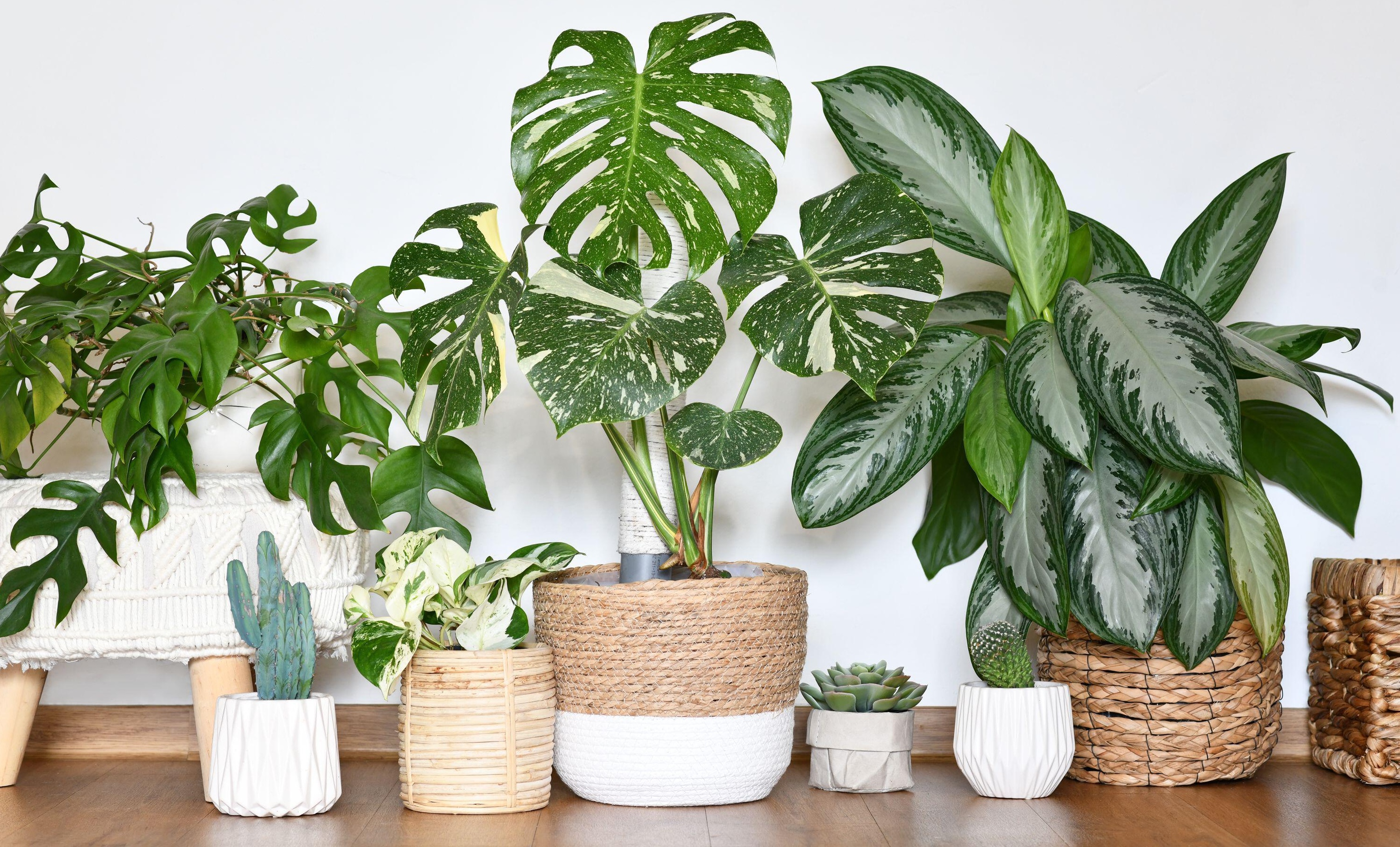
Monstera are extremely versatile when it comes to indoor garden ideas. The various Monstera cultivars and different types are suitable for shelves, pedestals, floor-mounted or as indoor climbing plants. The maintenance required for each doesn't differ much either.
"The good news with Monstera, is that care is pretty similar for all of them," says Justin Hancock, horticulturalist, Costa Farms. "There aren’t really particular tricks that would apply to one but not another.
"The most important aspect of care is light. All of these Monstera varieties want lots of bright light inside, and they’ll all do okay with medium light. I don’t recommend low light for any of them, but they’ll tolerate it. Light is the most important care aspect because drives their growth.
Justin continues, "In terms of watering houseplants, they’re all pretty similar—water them as the top half or so of the potting mix dries to the touch. If in doubt, it’s better to underwater than overwater all of them, as overwatering can lead to root suffocation, which is harder for the plant to recover from. As a pretty consistent general rule, the more light they get, the more energy they have to grow, and the more water they’ll use."
The Livingetc newsletters are your inside source for what’s shaping interiors now - and what’s next. Discover trend forecasts, smart style ideas, and curated shopping inspiration that brings design to life. Subscribe today and stay ahead of the curve.
Here are seven types of monstera and how you can display them.
1. Monstera deliciosa
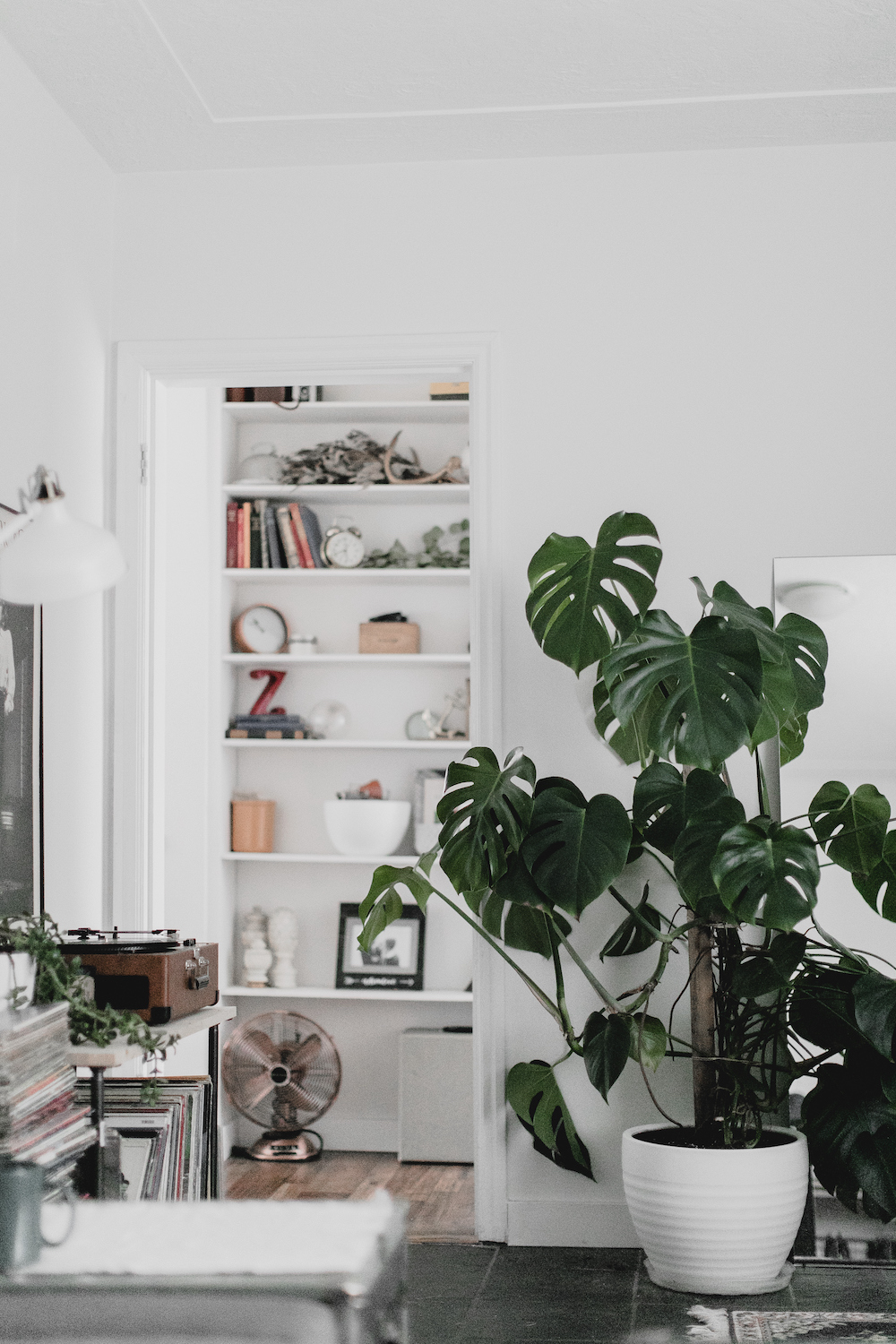
Monstera deliciosa is the classic "Swiss Cheese" plant, so-called because the holes in its large leaves resemble those in Swiss cheeses. It's also one of the best low-maintenance plants for indoor gardening. As long as it has a spot not far from a window, Monstera deliciosa is fairly forgiving if you forget to water it now and then. It grows fast, so be prepared to move it from a high surface to a spot on the floor if necessary.
"The Monstera deliciosa is a beautiful tropical plant prized for its large, fenestrated leaves," says Paris Lalicata, plant expert, The Sill. "When given support, this plant loves to climb which also helps it to develop larger leaves and its signature fenestrations (leaf holes)."
Paris says it thrives best in bright indirect light "but can tolerate morning direct sunlight. Like most houseplants, it’ll be happy planted in a standard potting mix that is rich in organic matter and well-draining. While it can adapt to normal room humidity it will enjoy higher humidity levels which helps more aerial roots to form and the plant to climb."
So, what would be the best spot to display this beauty?
"I love a large classic monstera deliciosa placed on a tall display cabinet so the leaves and aerial roots cascade down creating your own indoor jungle vibe," says New York and London-based creative director, Rebecca McEvoy. "As well as a single giant plant on one side of a cabinet, smaller multiples filling the whole of the top shelf looks good too, whichever best suits the space."
2. Cobra Monstera (Monstera standleyana Albo-Variegata)
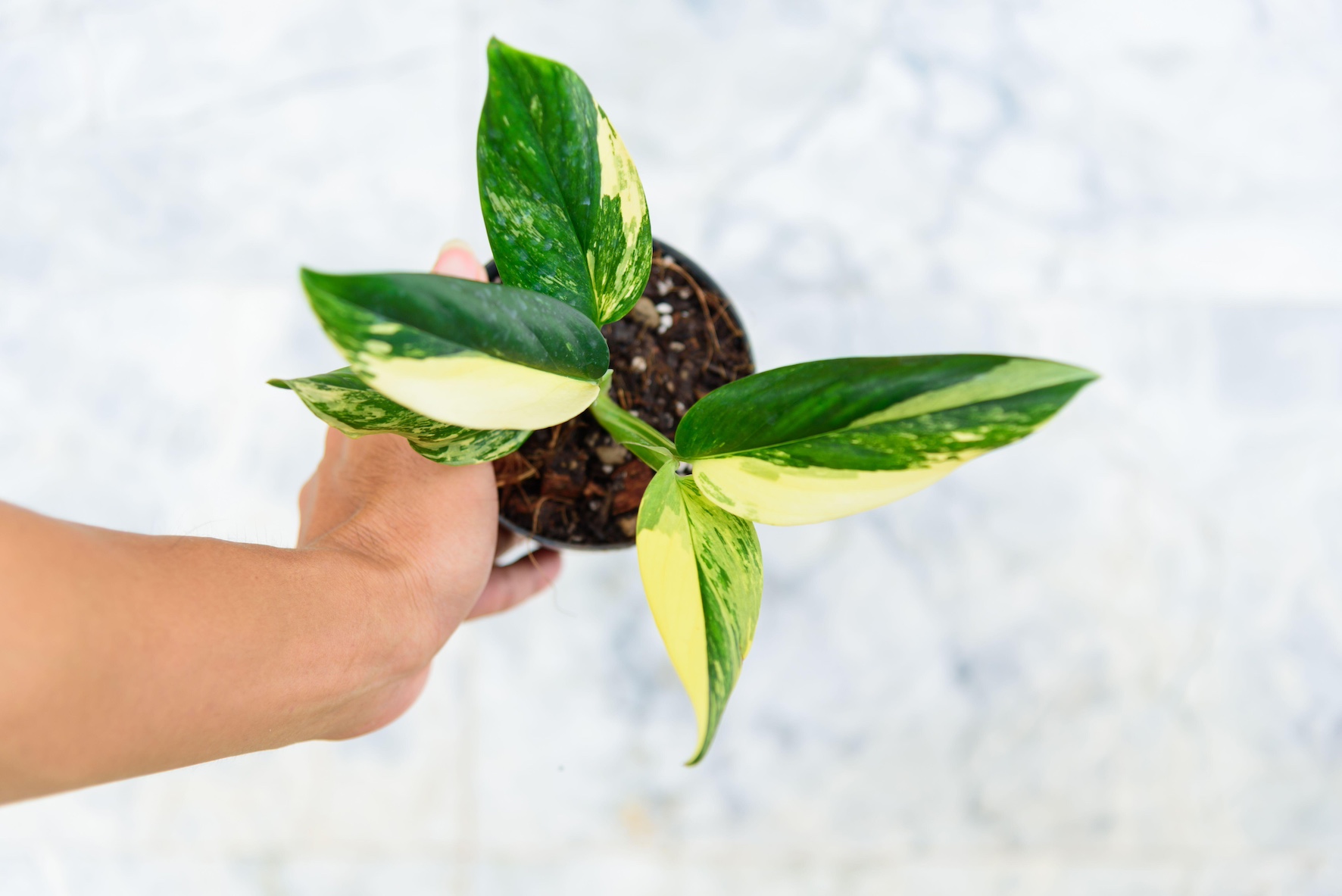
If you love indoor climbing plants with patterned (variegated) leaves, the Cobra Monstera (Monstera standleyana Albo-Variegata) is for you. This new Monstera cultivar has paddle-shaped leaves that are streaked in tones of white and cream. Cobra doesn't have the fenestrations (holes) that its brothers and sisters have, but it is as striking and easy to care for as its other family members and will climb or trail.
"While Cobra Monstera can be grown as a trailing plant, I recommend growing it upright," says Justin. "This is because — in my experience — if it’s not growing up, it tends to push out runner-type growth long, leafless stems. However, you don’t see this runner-style growth as much when it’s growing vertically.
Justin tells us: "The paddle-shaped leaves don’t form fenestrations (slits or windows) as it matures, making this one somewhat unique compared to the more common Monstera varieties. The leaves do get bigger as the plant matures — I’ve seen leaves about 8 inches long but they don’t get huge, making this one a fine choice for smaller spaces."
"With its unique white and green variegated leaves, the Monstera Standleyana Albo Variegata is a showstopper that demands attention in any room," says interior designer, Nina Lichtensteinand founder of Nina's Home Design. "To create a statement, display it in a tall, slender pot that allows its striking foliage to grow upwards."
3. Esqueleto Monstera
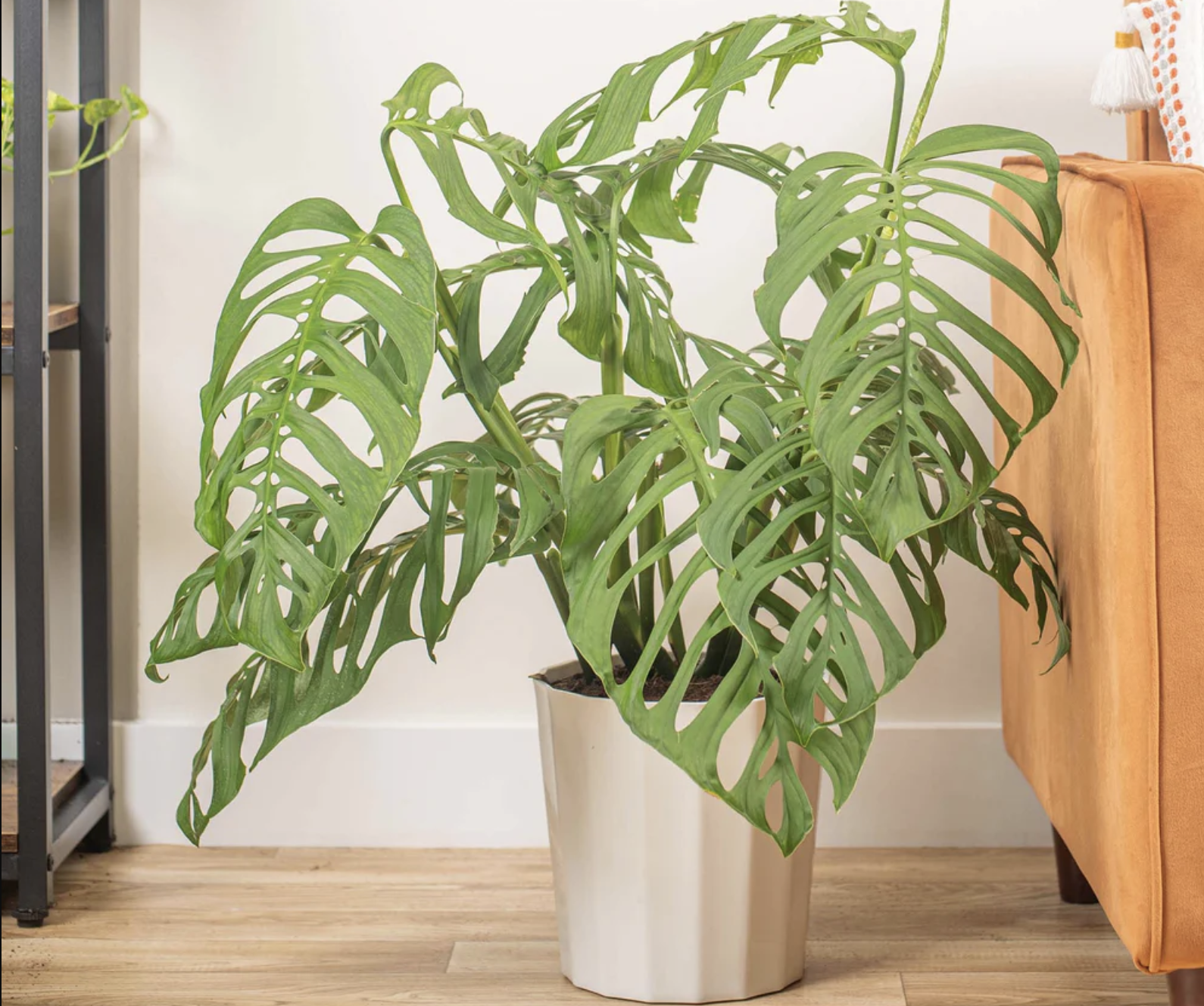
Looking for some eye-catching foliage? Check out the Esqueleto Monstera. With its enormous, lacy, fenestrated leaves, this beautiful houseplant provides presence. It can grow pretty large too, so it's usually treated as a floor plant.
"Esqueleto is a big, bold plant with leaves that can easily get a couple of feet long if you have good growing conditions," says Justin. "Like Cobra, this is another one you’ll want to grow climbing up a pole, as it can also produce runner-type growth if it’s not headed upward.
"In bright light, it’s a pretty quick grower, but it’s easy to trim so you can manage it in the average home without it taking over. Esqueleto leaves are a little thinner than some of the others, so average humidity is fine if your watering is on point, but if you let it dry out too much, then above-average humidity can help keep the leaves from getting crispy."
4. Little Swiss Monstera (Monstera adansonii)

If you love Esqueleto, but would prefer to start with a smaller yet striking indoor climbing plant, consider Little Swiss Monstera (Monstera adansonii). It still has the eye-catching fenestrated foliage and super-quick growth habit, but is a little easier to care for when it comes to wiping down those lacy leaves. It can also be displayed on a side table or shelf until it gets bigger.
"Think of Little Swiss like the baby brother of Esqueleto," says Justin. "It may be smaller now, but in time, it will also grow up big and strong with the capacity to have huge leaves. A lot of people have trouble telling a mature Little Swiss apart from an Esqueleto — in general, Esqueleto has bigger holes so there’s 'less' green leaf than the same size Little Swiss. In my experience, this is the fastest grower in the group, especially when it gets abundant light."
5. Thai Constellation Monstera (Monstera deliciosa Thai Constellation)
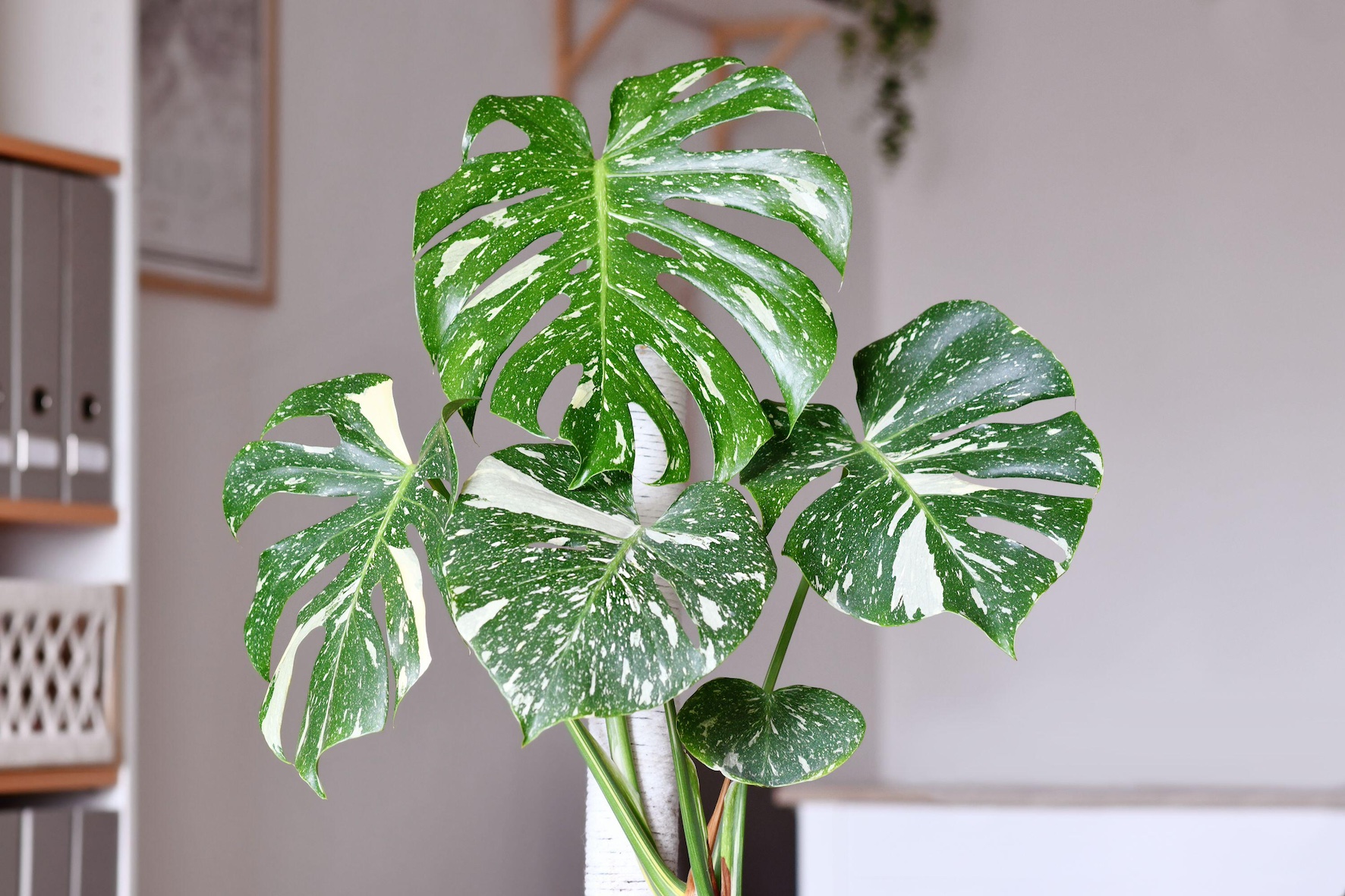
Those who enjoy decorating with plants will love the Thai Constellation Monstera for its oversized leaves, and super-cool variegated speckled leaf patterns. It's a slower grower compared to other types of Monstera, due to the variegation (and less chlorophyll), however it can still reach six feet tall and wide, so find it a suitable spot on a plant pedestal or on the floor.
"Thai Constellation Monstera is the 'It Plant' of the last few years," says Justin. "It's a gorgeous variety, with big, shiny, dark-green leaves variegated with creamy white. Every leaf is unique, and as the plant grows, the leaves get bigger and more eye-catching with larger fenestrations and splits.
"If you have optimal conditions, leaves can get about 3 feet across. It’s not nearly as fast as the others on this list; because of its slower growth, it has a thicker stem and won’t trail. But depending on the type of container you have, it can grow more horizontally or you can let it grow up like the others.
Justin explains that all of the Monsteras mentioned climb by sending roots into the support—so a moss pole or wooden stake is perfect for them.
"Because of how big and thick That Constellation Monstera is, if you do want to grow it up a pole, make sure it’s a sturdy pole the plant won’t eventually crush. Of the varieties on this list, Thai Constellation holds up best to drying out but if it gets too dry (or otherwise stressed) the creamy white variegation can start to grow brown."
6. Silver Monstera (Monstera siltepecana)

Although it will grow bigger, the Silver Monstera Siltepecana is suitable for a plant shelf, unlike some of its larger siblings. This Monstera has arrow-shaped leaves with a silvery overlay. It develops an interesting fenestration pattern as it climbs and matures. However, this smaller Monstera can be left to trail too.
"You might not recognize young specimens of this plant as a Monstera," says Justin. "The arrow-shaped leaves almost give off Cebu Blue Pothos vibes. But if you let it climb, the leaves get bigger and bigger and eventually form fenestrations. It’s a charming aspect of this plant that a mature leaf doesn’t bear as much resemblance to the young leaves as other common Monstera varieties. (You might be more inclined to confuse a mature Silver Monstera leaf with a mature Little Swiss)."
The expert notes that letting it climb will give you eye-catching views. He notes: "Letting it climb will give you the most eye-catching plant with huge leaves. I haven’t personally experienced runner-type growth from this one, so it appears to be fine to trail or grow horizontally too."
Nina Lichtenstein tells us that, "this smaller variety is perfect for hanging in a decorative macramé pot in a living room or entryway, allowing its vines to cascade down gracefully. Alternatively, placing it in a narrow space such as a bookshelf, where it can trail along the shelves, will add elegance and nature to your space. For a more dramatic effect, a climbing setup with a sleek support pole or trellis in a minimalist pot can create a modern, vertical garden feature."
7. Monstera Peru (Monstera Karstenianum Peru)
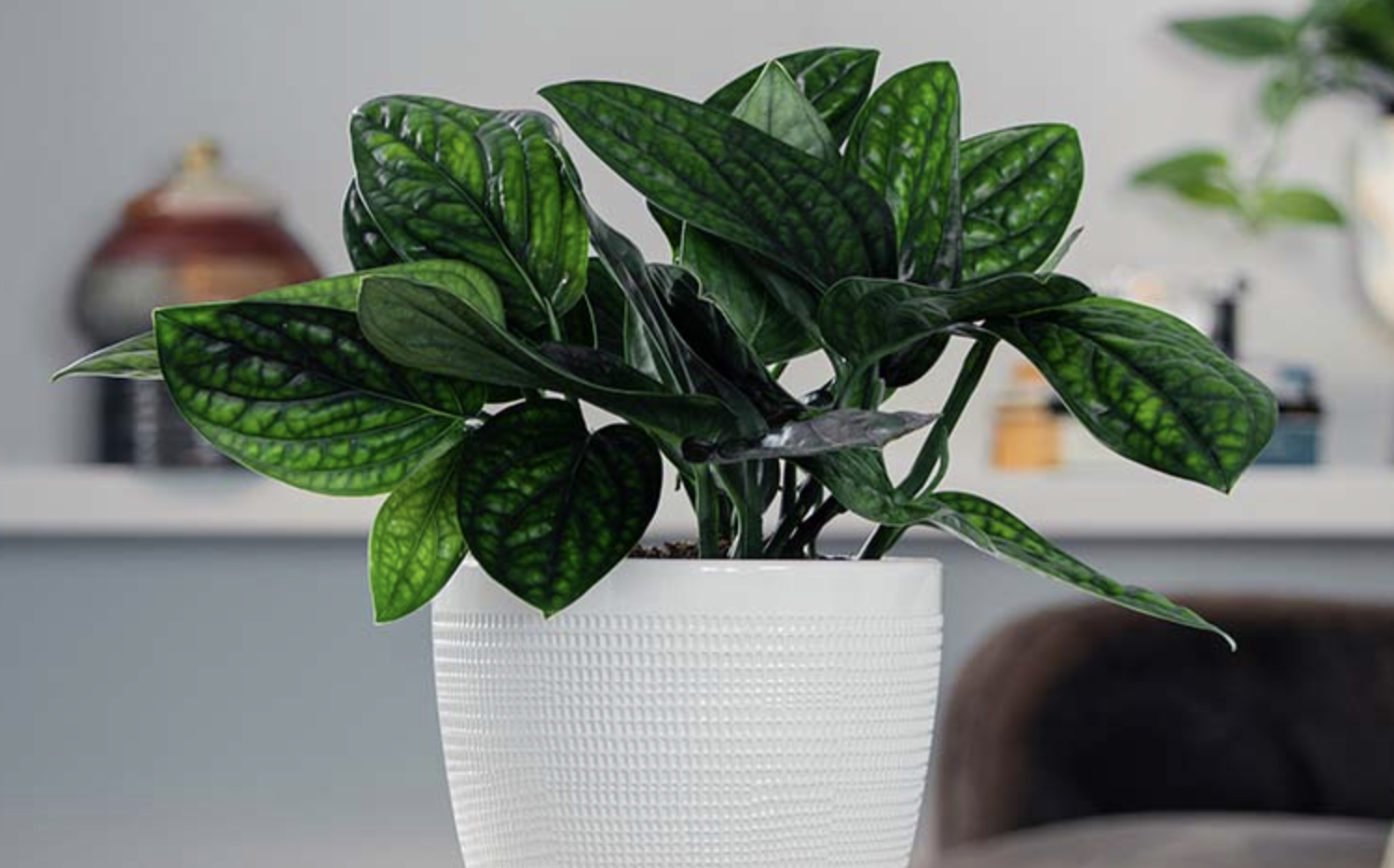
It's hard to believe this little plant is a Monstera. It's so different from the other, more familiar types. There's no enormous leaves, slits or hole-y fenestrations. What Monstera Peru has instead is deep green textured leaves on vining stems, which can be left to trail or trained to grow around a pole or stake.
"The texture on Peru Monstera's leaves looks almost corrugated," says Justin. "It's super-cool but it's a slow grower compared to other Monstera varieties. However, it has similar needs, so will happily grow alongside them, either climbing upright on a totem, horizontally across a mantle, or trailing down from a shelf."
FAQs
Which Monstera is easiest to take care of?
The fast-growing Monstera deliciosa is the easiest to take care of. Its low-maintenance requirements are part of its appeal. This plant can double in size within a year or so, with just a weekly water and a spot near a window.
"It’s best to allow the soil to dry out between waterings, but refrain from letting it remain dry for too long," says Paris Lalicata, plant expert, The Sill. "This may be every 7-14 days depending on the conditions in the home."
What is the rarest type of Monstera?
The Monstera Obliqua is one of the rarest types of Monstera. It has lacy leaves like the Esqueleto but is harder to find in the wild. For this reason, it can be pricier and less easily available to buy than other types of Monstera.
Jacky Parker is a freelance lifestyle journalist and writer, producing a wide range of features for magazines and digital platforms. She has written for Livingetc and its sister titles, Homes & Gardens and Country Homes & Interiors for more than 15 years, both as a freelance contributor and as Acting Digital Editor and Acting Style Content Editor, regularly reporting on the latest interiors, gardens and wellness inspiration, speaking to experts in their respective fields, and discovering the best tips.
Jacky has also written for other publications, including Sunday Times Style, The Telegraph, Architectural Digest, House Beautiful, ELLE Decoration, Red, Grand Designs and more.
